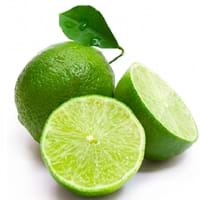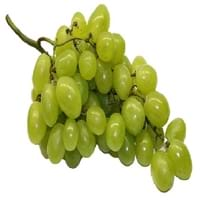Health Benefits
Arthritis treatment, Cholera treatment, Gout treatment, Heart care, Piles treatment, Scurvy treatment
Cancer prevention, Kidney stone treatment, Prevents constipation, Treatment of alzheimer's disease
General Benefits
Cures fever, Digestive aid, Eye care, Maintains healthy cholesterol level, Treatment of common cold
Digestive aid, Improves eye vision, Maintains healthy cholesterol level, Treatment of migraine
Skin Benefits
Anti-aging benefits, Skin rejuvenation, Treatment of acne, Treatment of dark spots
Anti-aging benefits, Heals sunburn, Skin rejuvenation, Treatment of dark spots
Hair Benefits
Promotes longer and healthier hair, Treatment of dandruff
Prevents hair loss, Regulates hair growth, Treatment of dandruff
Allergy Symptoms
Breathing difficulty, Coughing, Eye irritation, Hives, Inflammation, Nasal congestion, Runny nose, Skin rash, Wheezing
Anaphylaxis, Asthma, Breathing difficulty, Coughing, Drop in blood pressure, Hives, Skin rash, Stuffy nose, Swelling of mouth, tongue or lips, Wheezing
Side Effects
Chances of sunburn
Allergic reaction, Skin rash, Might slow down the process of blood clotting
Best Time to Eat
Along with meal, Best to drink warm water with lime on an empty stomach, Don't consume at night and before bed
As a snack in the late afternoon, Don't consume at night and before bed, Eat the fresh ones, avoid mixing with any other foods, don't eat after meal., Morning time (before lunch)
Vitamin B5 (Pantothenic Acid)
Vitamin C (Ascorbic Acid)
Vitamin K (Phyllochinone)
Phytosterol
Not Available
Calories in Fresh Fruit with Peel
Not Available
Calories in Fresh Fruit without Peel
Not Available
Calories in Frozen Form
Not Available
Calories in Dried Form
Not Available
Type
Citrus, Tree fruit
Berry
Season
All seasons
Autumn, Summer
Varieties
Key lime, Persian lime, Kaffir lime, Desert lime, Palestine Sweet Lime, Mexican Sweet Lime, Mary Ellen Sweet Lime
Cabernet Sauvignon, Merlot, Pinot Noir, Syrah/Shiraz and Zinfandel
Inside Color
Light Green
Light Green
Taste
Acidic, Sour
Sweet-Sour
Origin
India
Western Asia, Central Europe
Soil Type
Clay loam, Sandy loam
Clay loam, Sandy loam
Climatic Conditions
Sunny, Warm to hot climate
Warm
Facts about
- Lime is the called as the powerhouse of flavors.
- Fresh lime juice is so acidic that it can dissolve concrete.
- Limes are more fragrant and acidic than lemons.
- Persian limes are almost seedless and thorn less.
- If left alone, a grapevine can spread 50 feet and even more.
- There are more than 8,000 varieties of grape worldwide.
- They are available in 7 different colors: red, green, white, black, purple, blue and golden.
Other Countries
Argentina, Brazil, India, Mexico
Argentina, Armenia, Australia, Chile, France, Iran, Italy, Portugal, Romania, Turkey, United States of America
Top Importer
United States of America
United States of America
Top Exporter
Mexico
Chile
Botanical Name
Citrus aurantifolia
Vitis vinifera
Synonym
not available
Not Available
Subkingdom
Tracheobionta
Tracheobionta
Division
Magnoliophyta
Magnoliophyta
Class
Magnoliopsida
Magnoliopsida
Species
C. aurantifolia
Vitis vinifera
Generic Group
Citrus fruit
Grape
Difference Between Lime and Grape
We might think that Lime and Grape are similar with respect to nutritional value and health benefits. But the nutrient content of both fruits is different. Lime and Grape Facts such as their taste, shape, color, and size are also distinct. The difference between Lime and Grape is explained here.
The amount of calories in 100 gm of fresh Lime and Grape with peel is Not Available and 69.00 kcal and the amount of calories without peel is 30.00 kcal and Not Available respectively. Thus, Lime and Grape belong to Low Calorie Fruits and Low Calorie Fruits category.These fruits might or might not differ with respect to their scientific classification. The order of Lime and Grape is Sapindales and Vitales respectively. Lime belongs to Rutaceae family and Grape belongs to Vitaceae family. Lime belongs to Citrus genus of C. aurantifolia species and Grape belongs to Vitis genus of Vitis vinifera species. Beings plants, both fruits belong to Plantae Kingdom.









